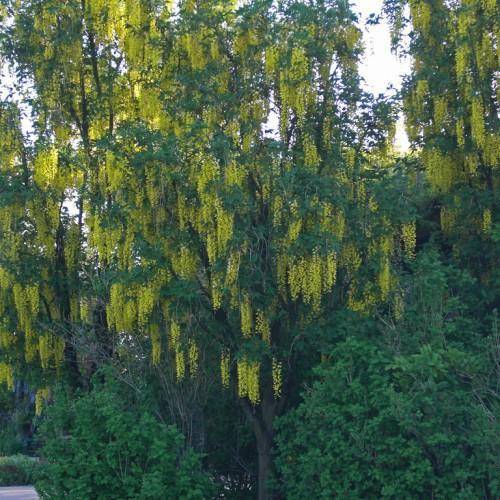
bean tree
Laburnum watereri 'Vossii'
Cycle:
Perennial
Watering:
Average
Hardiness Zone:
5 - 7
Flowers:
Flowers
Sun:
Full sun,part shade
Leaf:
Yes
Growth Rate:
High
Maintenance:
Low
Poisonous To Pets:
Yes
Drought Tolerant:
Yes
watering
Bean trees require thorough watering once per week in periods of moderate to hot weather. When watering, it is important to use room temperature water and saturate the entirety of soil around the tree. When soil is dry roughly 1 inch below the surface, it is time to water again. During cooler weather, watering may not be necessary every week – allowing soil to dry out slightly between watering sessions is still acceptable. Bean trees should generally not be allowed to go without water for more than 10 days. It is also important to fertilize bean trees, particularly during the warm months. Over fertilization of bean trees can cause damage, so it is important to consult a fertilizer chart to ensure that the correct amount of fertilizer is applied.
sunlight
For the Bean Tree (Laburnum watereri 'Vossii'), it needs full sun to partial shade for optimal growth. The plant can still thrive in shadier spots but growth and flowering may be reduced. This species requires about 6 to 8 hours of sunlight per day. The best placed for Bean Tree would be a location that is sunny in the morning, but shady in the afternoon when the sun is at its hottest.
pruning
Bean tree (Laburnum watereri 'Vossii') should be pruned in late spring or early summer, when flowering has finished. Pruning should be light, only removing dead or damaged branches as needed, and removing any overly-long shoots. It is best to prune the tips of the main branches if they become too long. Pruning should not be done too frequently, as bean trees respond well to infrequent pruning.
